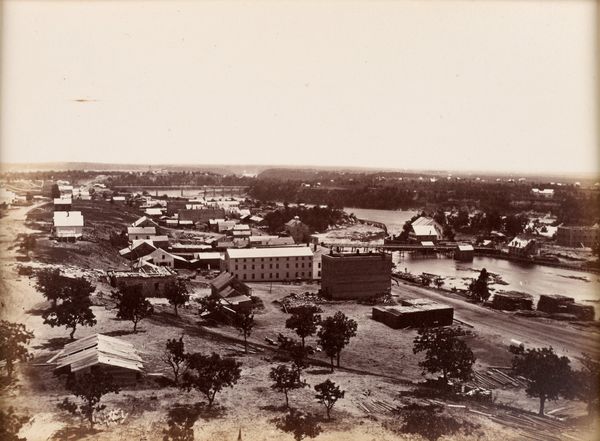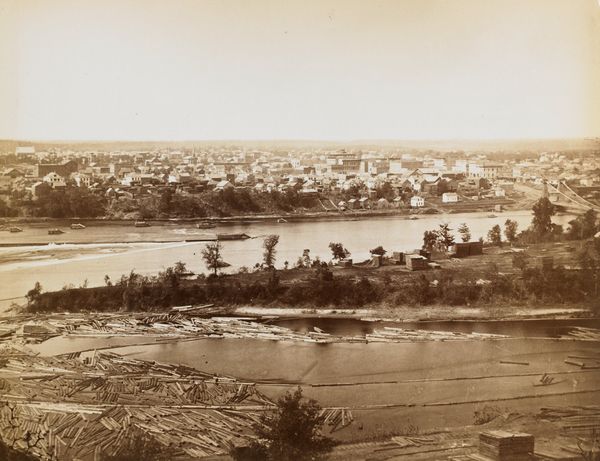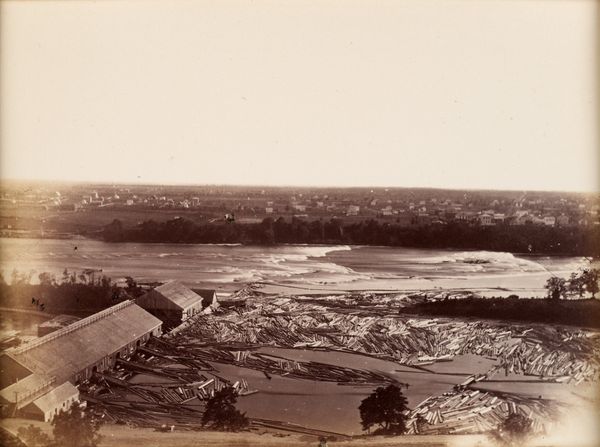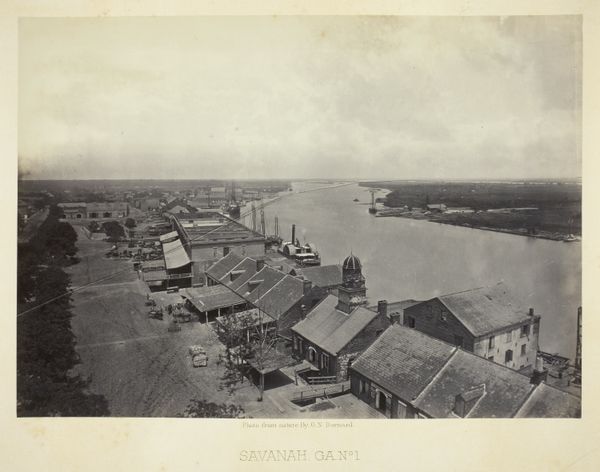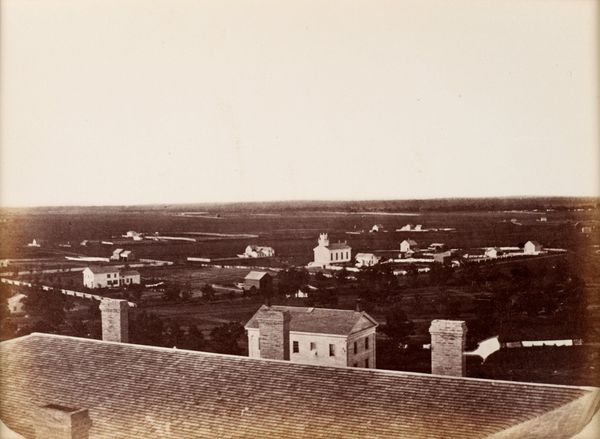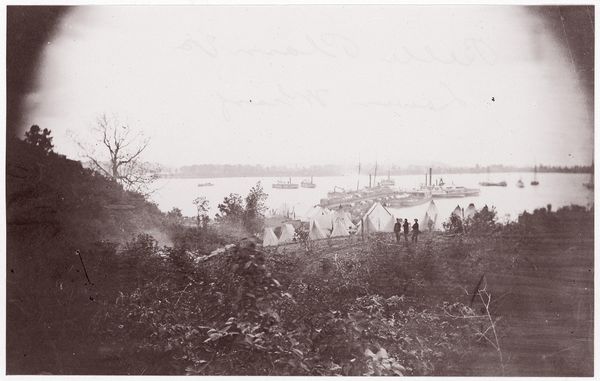
St. Anthony and Minneapolis from roof of Winslow House 1857
0:00
0:00
Dimensions: 6 1/16 x 8 3/8 in. (15.4 x 21.27 cm) (image)10 x 11 3/4 in. (25.4 x 29.85 cm) (mount)
Copyright: Public Domain
This photograph of St. Anthony and Minneapolis was taken by Benjamin Franklin Upton, likely in the late 19th century. The key element here is the wet collodion process, a photographic technique then in vogue. It demanded meticulous preparation and a darkroom for immediate development. Notice how this process influenced the image. The chemicals used, coated on a glass plate, were incredibly sensitive to light, capturing minute details. This is why we see a panoramic view with such clarity. The sepia tone is a result of the chemical development, a hallmark of early photography. But it's not just about the process. The photograph also tells a story about labor. Look at the logs floating in the river, destined for sawmills. Upton, by positioning himself above the scene, highlights the scale of this industry. The image becomes a document of resource extraction, showcasing the transformation of the landscape through human effort and ingenuity. It's a reminder that photography, like any craft, is deeply embedded in its social and economic context.
Comments
No comments
Be the first to comment and join the conversation on the ultimate creative platform.
